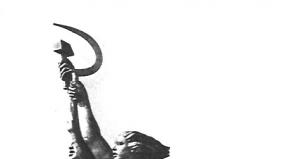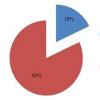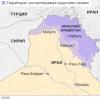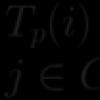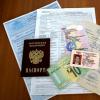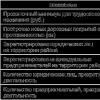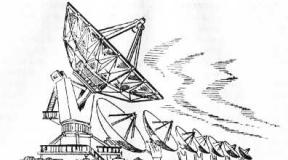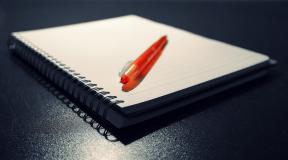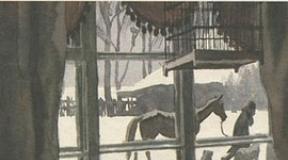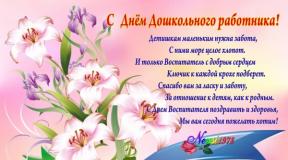Monument to world suffering Ivan Dmitrievich Shadr. School encyclopedia. life and work reflected in collectibles
Forms for<<Предыдущая страница Оглавление книги Следующая страница>>
The work of the remarkable Soviet sculptor Ivan Dmitrievich Shadr (1887-1941) is well known in our country and abroad. But not everyone knows that the sonorous name, standing under the amazingly expressive power of the works, is a pseudonym, which was made by the artist from the name of his native city.
Ivan Dmitrievich's father was a carpenter, who enjoyed a good reputation not only in Shadrinsk, but also in the surrounding villages. He cut down many houses in his native places. A talented person by nature, Dmitry Ivanov himself drew well, was known as a good storyteller. In a large large family, Ivan for the first time, thanks to his father, comprehended the beauty of the world around him. When the boy grew up, it was time to earn a living himself.
He was given into the service of a Yekaterinburg merchant. But the love of drawing, and especially modeling, paved the way for the teenager to an art and industrial school. Here, the future sculptor not only got acquainted with the basics of art, but also received civil hardening for the first time. Together with the students of the school, he participated in political demonstrations on the streets of Yekaterinburg during the days of the 1905 revolution. In the democratic journal "Gnome" his cartoons appeared, exposing tsarism.
I. D. Shadr, an outstanding Soviet sculptor
In 1906, after graduating from school, Ivan Ivanov, together with his friend Derbyshev, set off on a trip to Russia. After walking thousands of miles, Shadr visited the Caucasus, reached St. Petersburg, where he wanted to enter the Academy of Arts. However, before learning what he loved, he had to endure many life tests, in particular, to be a street singer. Once his voice was heard by the director of the Alexandria Theater M. E. Darsky, who took an active part in the fate of the gifted young man.
He helps him enter the Higher Drama Courses of the Moscow Theater School. At the school, Ivan continued to draw, stubbornly engaged in sculpture. His drawings came to the famous Russian artist I. E. Repin. Ilya Efimovich gave them a high appraisal. This largely determined the further path of the young man. At the request of the St. Petersburg connoisseurs of Ivan Dmitrievich's talent, the Shadrinsk city government assigns him a scholarship.
For about two years, the sculptor has been improving his skills in Paris and Italy, studying with the famous French sculptor Bourdelle, and getting acquainted with outstanding examples of world art.
Returning to Russia in 1913, Shadr was full of creative ideas. He creates a project for a monument to world suffering, performs a number of works marked with the stamp of symbolism. But Ivan Dmitrievich's strong connection with the people still helps him to define himself as a mature realist.
The Great October Socialist Revolution became a turning point in the artistic destiny of Shadr. He gives his talent and life to the service of the people who have thrown off the yoke of the exploiters. The end of the civil war finds the Red Army soldier Ivanov in Omsk. Here the sculptor creates the first portraits of Karl Marx and Karl Liebknecht.
The designs for monuments to the Paris Commune and the October Revolution show that Shadr is thinking about a new monumental art. In 1922-1923, commissioned by Goznak, he creates wonderful sculptural images of a peasant, a Red Army soldier, and a worker. These works, reproduced on money, stamps and bonds of the Soviet state, became known to millions of people and received their recognition. It is interesting that the sculptor found the prototypes of his peasant heroes in his native places - in the village of Prygovaya, Shadrinsk district.
The artist dedicates a wonderful monumental sculpture "Cobblestone - the weapon of the proletariat" to the working class.
Shadr dreamed of capturing the image of Vladimir Ilyich Lenin. But he started his "Leniniana" only on the mournful day of the people's farewell to their beloved leader. He was instructed to perform a posthumous portrait of Ilyich. The sculptor recalled: "I forgot everything in the world, everything except the great man lying before me."
The work in the Hall of Columns marked the beginning of Shadr's cycle of works dedicated to Lenin. The cycle ended in 1927 with a monument that was intended for Moscow, but was installed in ZAGES. “For the first time,” A. M. Gorky wrote about this work, “a man in a jacket, cast in bronze, is really monumental ... The artist very successfully reproduced the familiar imperious gesture of Ilyich’s hand, the gesture with which he, Lenin, indicates the frantic force of the current Chickens."
In 1929, Ivan Dmitrievich creates the sculpture "Seasonal Worker". The bright image of the worker is at the same time a portrait of his father, a talented craftsman.
In the late 1930s, Shadr was working on a project for a monument to A. S. Pushkin, and began writing works dedicated to A. M. Gorky. In 1940, a model of a monument to the great proletarian writer for Moscow was already ready. But the work on the sculpture, now standing on the square of the Belorussky railway station, was completed by a team led by V.I. Mukhina.
For this monument, Shadr was posthumously awarded the State Prize. Ivan Dmitrievich left behind a remarkable creative legacy. A passionate muralist, he was also a penetrating portrait painter. His works are distinguished by the depth of psychological penetration into the inner world of man.
Russian Soviet artist, monumental sculptor
Ivan Dmitrievich was born on January 30, 1887, graduated from a parish school, and was good at drawing. At the age of 11, he was sent to work at the Yekaterinburg factory Panfilov and Sons. In 1904, he studied at the art and industrial school in Yekaterinburg with Theodor Eduardovich Zalkaln (a student of Rodin), then at the drawing school of the Society for the Encouragement of Arts in St. Petersburg, later in Paris (Academy of Arts) and Rome (Institute of Fine Arts).
Already a well-known sculptor, I. D. Shadr came to his home from Moscow more than once. In 1918 he delivered the first public lecture on art in Shadrinsk. In this house, he created a portrait of Maria Yegorovna's mother from nature. In 1922, in the village of Prygovaya (Kalganova) in the Shadrinsk region, he worked on the famous series of sculptures: "Worker", "Peasant", "Red Army Man", "Sower" to reproduce them on the first Soviet money and stamps. Ivan Dmitrievich works as the chief artist of the 2nd State Sign Factory under the People's Commissariat of Finance and is responsible for the design of all monetary products.
Ivan Dmitrievich lived in the era of revolutionary upheavals, so his work is closely connected with these events. After the death of the leader of the proletariat, the Lenin theme became central in the creative biography of many Soviet artists. Commission for perpetuating the memory of V.I. Lenin invited artists and sculptors to the Hall of Columns of the House of the Unions, who for four days drew and sculpted V.I. Lenin from nature. Back in Gorki on January 22, 1924, the sculptor S.D. Merkurov removed his mask. During the mourning days of farewell to the leader, 25 masters of fine arts worked in the Hall of Columns, among them N.P. Ulyanov, S.D. Merkurov, D.S. Moore, K.S. Petrov-Vodkin, I.D. Shadr and others. On mourning January days in the Hall of Columns I.D. Shadr worked continuously for 46 hours. The sculptor first sculpted V.I. Lenin. He was crushed by immeasurable grief, but he was supported by a sense of great responsibility to the people for his work. In those hours when Shadr was at the tomb of Lenin, he gave his word to create a monument that would immortalize Ilyich in all the greatness of his genius. “Standing in the distance, I was numb,” the artist later wrote, “I was attacked by panic fear in the first minute. I vaguely remember that they carried my clay past me, a bucket of water, a modeling machine, and placed it next to the coffin. Sculpt at a time when the preservation of the body was not yet known. Sculpting before history, when my work appears, may be the only document for studying the portrait of Lenin. To sculpt surrounded by millions of critical eyes, inquisitively and jealously comparing my cast with the original ... I started working, sculpted in full size. Clay, caressed by hands, easily and obediently obeyed my will. Shadr's work was a document of great historical and artistic value.
02/15/1924 Commission of the Central Executive Committee of the USSR (chairman - F.E. Dzerzhinsky, members: M.I. Kalinin, L.B. Krasin, A.V. Lunacharsky, A.S. Yenukidze, K.E. Voroshilov), fulfilling the decision of the II Congress of Soviets of the USSR of 01/26/1924 on perpetuating the memory of Lenin, announced a competition for the best works of art. More than 500 entries were received in a month. 03/25/1924 The commission reviewed the works received: 55 sculptures, 23 paintings and drawings. Of the sculptural works, the following were recognized as good and recommended for mass production and distribution: a bas-relief and a sculptural bust made by V.A. Andreev; mask and bas-relief (plaster of bronze) made by I.D. Shadr, out of the rest of the received works, 12 were recognized as satisfactory, and the rest were rejected. It was a great success for our countryman.
Since 1924, Ivan Dmitrievich has been actively working on the Leninist theme. Speaking at a meeting of the Moscow Architectural Society on March 1, 1924, I.D. Shadr said: "The question of a 'large' monument is very complicated, and it is difficult to say anything definite in this respect now." At this time, the artist received an order for a monument to V.I. Lenin from the Gosznak administration, where his earlier sculptures were located: “Worker”, “Peasant”, “Red Army Man”, “Sower” (all 1922), “Cobblestone - the weapon of the proletariat” (1927), which marked the beginning of the creation of a portrait of a working man.
In 1926, monuments to V.I. Lenin in many cities of the country. The most significant achievement of monumental art was the work of I.D. Shadra - a monument to V.I. Lenin (1925-1927) in Georgia at the Zemo-Avchal hydroelectric power station. The monument was erected at the confluence of the Aragva and Kura and organically fit into the surrounding landscape. The beautifully executed bas-relief in the January days of 1924 was used by the author when working on a portrait of V.I. Lenin for the monument. The result of the master's creative searches was a sculptural composition, which is distinguished by expressiveness and dynamism, and also has a great portrait resemblance. The proposal to install the figure of V.I. Lenin at the Zemo-Avchalskaya hydroelectric power station in Transcaucasia impressed the author and helped him finally establish himself in the correctness of the compositional solution of the monument. The new monument became one of the best works of 1920-1930. and the largest monument to V.I. Lenin (16 meters high). M. Gorky's words about this work by Shadr are known: "For the first time, a man in a jacket, cast in bronze, is truly monumental and makes you forget about the classical tradition of sculpture." A.V. Lunacharsky noted: “To describe a real great proletarian leader is a gigantic task, which requires a very high level of worldview and enormous talent. Not every talented artist could successfully cope with such a difficult task.”
In 1934, a monument to Lenin was erected at the main entrance to the museum. Lenin in Gorki. For 13 years after the death of Lenin, Shadr completed 16 sculptural images of Vladimir Ilyich.
04/06/1930 The Presidium of the Central Executive Committee of the USSR approved the highest state award - the Order of Lenin. Leading artists of the country - I.D. Shadr, I.I. Dubasov, V.K. Kupriyanov. In 1934, the appearance of the order was somewhat changed; N.A. took part in the creation of the final version. Sokolov and A.F. Vasyutinskiy.
In 1935 I.D. Shadr created sculptural compositions for the hall of the Supreme Soviet of the USSR in the Grand Kremlin Palace.
The Museum of the Revolution (Moscow) collected most of Shadr's works: "Worker", "Peasant", "Red Army", "Rest", "Storm of the Earth", "Leader" (intended for the Mausoleum), a bust of Krasin and his mother, a head Lenin, made from nature, etc. Director of the museum S.I. Mickiewicz said: "The Museum of the Revolution is the Museum of Shadr." The Shadrinsk Museum of Local Lore exhibits 16 sculptures of our countryman.
In Moscow, on Krasnaya Presnya, a sculpture “Cobblestone is a weapon of the proletariat” was installed, on the square named after. Lermontov - "Seasonal". For the Novodevichy cemetery, he created sculptural tombstones: E.N. Nemirovich-Danchenko, V.L. Durov, N.S. Alliluyeva (1939) and others. After the death of Mayakovsky, Shadr worked on the project of his monument. Sculpture G.K. Ordzhonikidze, made by him for an exhibition in 1940, was broken by someone at night, which greatly upset the already ill Shadr. Ivan Dmitrievich knew A.M. closely. Gorky and worked on a monument to the writer, completed by V. Mukhina and installed on the square of the Belorussky railway station in 1951.
Ivan Dmitrievich Shadr, after a serious illness, died on 04/03/1941 and was buried on April 6 at the Novodevichy cemetery in Moscow.
In the city of Shadrinsk there is Ivan Shadr street. In Yekaterinburg, the Yekaterinburg Art College bears the name of Shadr (since 1987).
comments powered by HyperCommentsThe easiest way to help our project is to share this page on your social networks. Thanks a lot in advance!
Ivan Dmitrievich Shadr (real name - Ivanov; 1887 - 1941) - Russian Soviet artist, monumental sculptor, representative of the "academic modern" direction. He was born on January 30 (February 11), 1887 in the city of Shadrinsk (now the Kurgan region) in a large family of a carpenter (14 children).
In 1898, Vanya was taken to Yekaterinburg to the factory of the Panfilov merchants, where he was first an errand boy, then a watchman and a loader. In 1901, Ivan ran away from the factory. Without any preparation, he successfully passed the exam in drawing at the Yekaterinburg School of Industrial Art, where he studied until 1906 with T. E. Zalkaln.
In the summer of 1907, Ivan, together with fellow student Peter Drobyshev, set off to wander around Russia to the places where Maxim Gorky had once visited. They visited the Kama, Volga, Don, traveled through the Caucasus, Ukraine, stopped in Moscow, Ivan walked to St. Petersburg. In the capital, after an unsuccessful attempt to enter the Academy of Arts, Ivan worked part-time, in particular, by street singing. Once his voice was heard by the director of the Alexandria Theater M. E. Darsky, who took an active part in the fate of the young man. He helped Ivan enter the Higher Drama Courses of the St. Petersburg Theater School so that he could study as a singer. At the school, I. Shadr continued to draw and sculpt. His drawings came to I. E. Repin, who gave them a high rating. At the request of the St. Petersburg connoisseurs of Ivan Dmitrievich's talent, the Shadrinsk city government awarded him a scholarship. In St. Petersburg, Shadr also attended the drawing school of the Society for the Encouragement of the Arts of N. K. Roerich and the School of Music and Drama. Ivan lived in the capital until 1908, then served in the Russian army for a year.
In 1910 Ivan went abroad. First to Paris, where he was a student of higher municipal courses in sculpture and drawing at the Academie de La Grande Chaumiere under the guidance of F. O. Rodin and E. A. Bourdelle. Then the Parisian teachers sent I. Shadr for an internship in Rome at the Institute of Fine Arts. In 1912 Ivan Dmitrievich returned to Russia. In Moscow, he studies at the Moscow Archaeological Institute. In 1918, Shadr left for Omsk to take his family to Moscow, but remained in this city until 1921. There he lectured on art. In 1921, as soon as the railway communication was restored, Shadr left for Moscow.
In 1926, I. Shadr became a member of the Society of Russian Sculptors, later the Union of Soviet Sculptors.
I. D. Shadr died on April 3, 1941 in Moscow. He was buried in Moscow at the Novodevichy Cemetery (plot No. 2, tombstone - sculptor Rabinovich, architects G. P. Golts, A. A. Zavarzin).
Creative activity
In his work, Ivan Shadr was looking for ways to create a monumental realistic sculpture. Numerous memorial structures, created by him in the 1910-1930s, were dedicated mainly to the victims of the First World War. They are associated with the traditions of Art Nouveau and national-romantic movements, they are distinguished by viscous, heavy rhythms, addiction to a metaphorical understanding of the motive of the human body, a stone solidifying in dead matter or released from it, sometimes using elements of folk architecture. Among his early works stands out the project "Monument to World Suffering" (1916). Later, this work was transformed into an even more grandiose project of the “Monument to Humanity”.
In 1919, the Siberian Cadet Corps ordered Ivan Shadr a monument to his pupil, General Kornilov, for 18 thousand rubles. In the same year, the sculptor is preparing a project for the coronation of Admiral Kolchak, as well as a project for a monument in honor of the liberation of Siberia. In addition, the Kolchak government entrusted Shadr with the development of sketches for banknotes of the "Revival of Russia" series. However, these projects remained unrealized, since in November 1919 the Omsk government fled from Omsk and the city was occupied by the Red Army.
In April 1920, I. Shadr undertakes to perpetuate the memory of the victims of the White Terror, who were buried in the city garden of Omsk. In May of the same year, he received an order from Sibrevkom for a monument to Karl Marx. In the summer, the statue was already ready and installed. In Omsk, Ivan Dmitrievich also worked on reliefs depicting Karl Marx, Karl and Wilhelm Liebknecht and Rosa Luxemburg.
I. D. Shadr is the author of sculptures of the so-called “money men”: figures of a worker, peasant, Red Army soldier and sower (gypsum, 1922, Russian Museum; bronze castings - in the Tretyakov Gallery), created by order of Goznak for reproduction on banknotes. The first three sculptures became the basis for issuing the fourth definitive issue of postage stamps of the RSFSR (TsFA (ITC "Marka") No. 73-85), the first definitive issue of the USSR (TsFA (ITTs "Marka") No. 99-194) and partially - for two subsequent (TsFA (ITC "Marka") No. 281-287, 291-295). The first art stamped postcard and stamped envelope in the USSR came out with "Shadrov" stamps. Sculptures of Ivan Dmitrievich were also reproduced on the bonds of loans and government securities of the USSR. The sculptor found the prototypes of his heroes in the village of Prygovaya, Shadrinsk district.
In 1923, Shadr took part in the design of the All-Russian Agricultural and Handicraft-Industrial Exhibition in Moscow. His sculptures were also shown there, which were a success.
In 1924, Ivan Shadr created a natural sculpture "Lenin in a coffin", which made him the main master of the pre-war sculptural Leniniana. For 13 years, I. Shadr created 16 sculptural images of V. I. Lenin, including for the Central Museum of V. I. Lenin in 1934. One of his most significant works is a monument with an eleven-meter bronze figure, installed in 1927 on the territory of the Zemo-Avchal HPP named after V. I. Lenin (ZAGES) in Georgia. This is one of the first monuments to V.I. Lenin, it was dismantled in 1991.
Ivan Shadr created revolutionary romantic, generalized symbolic images, for example, the high relief "Fighting the Earth" (1922), the sculpture "Cobblestone - the weapon of the proletariat" (1927). The latter, in addition to Moscow, was installed in Chelyabinsk, Lvov, Shadrinsk, Mongolia and Romania.
In 1934, Ivan Shadr began work on the sculpture "Girl with an oar" for the Gorky Central Park of Culture and Culture in Moscow. The main model of the sculptor was V. D. Voloshina, a student at the Moscow Institute of Physical Education. The sculpture was installed in the center of the fountain on the main thoroughfare of Gorky Park in 1935. However, it was criticized and in the same year it was moved to the Gorky Park of Culture and Leisure (Lugansk)|Park of Culture and Leisure of Luhansk. Its reduced copy is kept in the Tretyakov Gallery. In the late 1950s, at the insistence of the sculptor's wife, the plaster work of I. Shadr was transferred to bronze.
By the summer of 1936, I. D. Shadr created a new enlarged eight-meter sculpture from tinted concrete. The model for her was the gymnast Zoya Bedrinskaya (Belorucheva). The new "Girl with an oar" was installed in the center of the fountain in its original place. The sculpture was destroyed in 1941 during the bombing.
It is erroneously believed that the sculptures of Ivan Shadr served as prototypes for the creation of cheap plaster copies, which were massively installed in parks almost throughout the USSR. In fact, they were based on the work of the sculptor R. R. Iodko with the same name, but the figure of the girl was in a bathing suit and with an oar in her left hand, made by him for the park of the Dynamo water stadium in 1936.
In the late 1930s, Shadr worked on a project for a monument to A. S. Pushkin. In 1939 he created a sculpture of A. M. Gorky in the image of the Petrel (bronze, Tretyakov Gallery). In the same year, he prepared a more classical model of the Gorky monument. However, this monument was erected at the Belorussky railway station in Moscow after the death of Ivan Dmitrievich by the sculptor V.I. Mukhina with the help of N.G. Zelenskaya and Z.G. Ivanova.
Most of the works of I. D. Shadr (in particular, "Storm of the Earth", "Cobblestone - the weapon of the proletariat" and others) are in the Museum of Contemporary History of Russia in Moscow.
I. D. Shadr is the author of the tombstones of N. S. Alliluyeva (1933; architect - I. V. Zholtovsky) and E. N. Nemirovich-Danchenko (1939) at the Novodevichy cemetery in Moscow. Both tombstones are made of marble and granite. The tombstone for Nadezhda Alliluyeva was made by a sculptor commissioned by the Central Committee of the All-Union Communist Party of Bolsheviks.
Ivan Shadr and sculptor P. I. Tayozhny were the authors of the layout of the Order of Lenin, the sketch of which was handed over to them in the spring of 1930.
Interesting Facts
The pseudonym "Shadr" Ivan Dmitrievich began to use since 1908. Its basis was the name of the native city of Shadrinsk. Ivan Dmitrievich wrote:
There are too many of us Ivanovs. You have to somehow distinguish yourself from other Ivanovs, so I took the pseudonym "Shadr" for myself - from the name of my native city, in order to glorify it.
In the issue of the newspaper "Leningradskaya Pravda" in 1961 (almost 20 years after the death of Shadr), an article appeared "Bronze, cast iron, aluminum", dedicated to the famous Leningrad plant "Monumentskulptura". In particular, it said:
These days, the sculptor I. D. Shadr often comes into the workshops of the plant. Now the casting in bronze of his sculpture, called "Cobblestone - the weapon of the proletariat", has been completed.
"Cobblestone - the weapon of the proletariat", "Worker and Collective Farm Woman"- created many years ago Soviet sculptors I. Shadr and V. Mukhina. These sculptures times the USSR have withstood the test of time and firmly entered our lives, and their authors have taken a worthy place in the history of Soviet and world fine arts.
I. Shadr: sculpture "Cobblestone - the weapon of the proletariat" (1927)
To the 10th anniversary of October I. Shadr completed the sculptural composition "Cobblestone - the weapon of the proletariat". A half-naked figure of a worker leaning towards the ground, full of dynamics. Volitional composure of the gesture. Stubbornly clenched mouth. Every muscle is tense.
The famous Russian painter M. V. Nestorov wrote about sculpture:
“A young worker, in a fit of struggle that has seized him for a cause dear to him, the cause of the revolution, picks up stones from the pavement in order to break the skull of a hated enemy with them. I stand enchanted, go around - great!
I. Shadr perfectly coped with the artistic task. The sculpture is plastic, looks good from all sides. Recently, the executive committee of the Moscow City Council decided to install an enlarged copy of the sculpture on Krasnaya Presnya. It will be a monument to the heroes of the barricade battles of the 1905 revolution.
Workers, peasants, soldiers - a favorite theme of the creations of I. Shadr. And this is no coincidence. Ivan Dmitrievich Ivanov (1889 - 1941) was born into a poor working-class family in the village of Taktashinsky near the city of Shadrinsk (hence his pseudonym - Shadr).
A difficult life developed in the future sculptor perseverance and a desire for knowledge. A long and hard study began in 1902 at the Yekaterinburg School of Art and Industry. Then - Petersburg, where Shadr came on foot. The artist V.N. Davydov and the artist I.E. Repin drew attention to the talented young man. They helped him continue his education abroad.
Returning to his homeland, the sculptor is working on a project "Monument to World Suffering", and in 1922 he creates busts and half-figures, which received the names "Sower", "Peasant", "Worker", "Red Army". These sculptures were reproduced many times on bonds, banknotes of the young Soviet republic. They are also known from postage stamps.
I. Shadr remained faithful to the theme of the working people until the last days of his life.
The art of the sculptor is deeply original, truly folk, imbued with the pathos of life-affirmation. His creations have all their roots in the history of our country.
Sculptures by Vera Mukhina (USSR)
In Moscow, a 24-meter stainless steel sculptural group rises in front of the Northern Entrance to VDNKh. "Worker and Collective Farm Woman"- the personification of the indissoluble union of the working class and the collective farm peasantry of the USSR. Hand in hand, in rapid motion, two figures, holding the Soviet emblem high, symbolize the youth of the Motherland.
Sculptor V. Mukhina: "Worker and Collective Farm Woman" (1937)

This gigantic steel sculpture captures the images of a new man, full of strength and spiritualized beauty. USSR sculptor V. Mukhina managed to achieve vivid expressiveness with the originality of the composition: the group is directed forward and upward. The figures form a vertical, which is supported by raised hands with a sickle and a hammer, horizontal details - a wide stride, arms thrown back and a fluttering scarf - enhance the swiftness of movement.
The dynamism of the composition, plasticity, and flexibility were also contained in the material that V. Mukhina first used in sculpture. The interior of the statue consisted of steel molds, this metal frame was lined with sheets of chromium-nickel steel, some details of the figures were fastened by electric welding.
The sculptural group "Worker and Collective Farm Woman" was created for the Soviet pavilion at the World Exhibition in Paris in 1937. Romain Rolland, having visited the exhibition, wrote in the guest book: “At the International Exhibition on the banks of the Seine, two young Soviet giants in an indomitable impulse raise the hammer and sickle, and we hear the heroic anthem pouring from the chest, which calls the peoples to freedom, to unity and leads them to victory."
Biography facts
Vera Ignatievna Mukhina (1889 - 1953) began her career as an artist with classes in Moscow studios with K. F. Yuon, I. O. Dudin, and I. I. Mashkov. Then in Paris she took consultations from the French muralist Bourdelle. Paris left traces of formalism in the early works of Vera Ignatievna, this was especially noticeable in the monumental composition "Pieta"(mother mourning her dead son), which adorned the arch of the old premises of the Chamber Theater in Moscow.
Sculpture "Peasant Woman" (1927) brought Mukhina success. Here, new features of her later creations were already laid. In the early 1930s, she worked on a number of portrait sculptures summarizing the image of a man of the Soviet era. After "The Worker and the Collective Farm Woman", a project of a monument to M. Gorky for the city of Gorky and a group "Bread" (1939), which was part of the sculptural cycle "The Wealth of the Motherland", designed for the new Moskvoretsky Bridge.
Portrait works of the war and post-war years reflected the new Mukhina style. She sought to highlight the "special signs" of the human soul, so the sculpture acquired accuracy, laconism.
With the masters Z. Ivanova and N. Zelenskaya in 1951, Mukhina completed monument to A. M. Gorky in Moscow (on the square of the Belorussky railway station), the model of which was made by I. Shadr in the last years of his life.
Mukhina combined two masters - a portrait painter and a muralist. She was attracted and has a big theme, a big image, a big scope. In each work one feels strength, energy, artistic expressiveness, the spirit of a bold, innovative search.
In her own words, she managed in her sculptures "to convey all the romanticism and creative burning of our days."
Ivan Dmitrievich Shadr:
life and creativity reflected in collectibles.
Rice. 1 "Ivan Dmitrievich Shadr. 1940"
Among the figures of culture and art of our Motherland, the name of Ivan Dmitrievich Shadr (years of life 1887 - 1941) has long occupied one of the places of honor (Fig. 1).
A native of the people, with his diligence and talent, he achieved outstanding results. His work from the 20s of the last century until the end of his life is inextricably linked with the theme of labor and man - the worker.
This article is an attempt to analyze to what extent the work of the sculptor, from the small Trans-Ural town of Shadrinsk, is reflected in collectibles.
Archival materials, documents of the Shadrinsk Museum of Local Lore named after V.I. V.P. Biryukov, books, magazines dedicated to the life and work of the sculptor, materials provided by Russian collectors, items from a personal collection, as well as sources from the Internet.
We see images of I. Shadr's creativity on the banknotes of the RSFSR and the USSR, stamps, envelopes, postcards, table medals and figurines, filmstrips, badges.
Books about the sculptor and his works have already become second-hand rarities. Last published in 1978, i.е. 37 years ago.
Many articles and very few books have been written about I. Shadr. But I would like to draw special attention to one point.
Ivan Dmitrievich Shadr was born not on January 30 (old style), as is commonly believed, but on the 31st (old style). This is what was recorded in the Metric Book of the Holy Trinity Church in the village of Ostrovnoy for 1887.
Date of birth - January 31 (old style) 1887, date of baptism - February 1 (old style). Parents: the city of Shadrinsk, a tradesman Dmitry Evgrafov Ivanov and his legal wife Maria Egorova, both Orthodox.
The work of Ivan Dmitrievich, which is reflected in collectibles, can be conditionally grouped into several areas:
1. Bonistics.
2. Philately.
3. Philokartiya.
4. Collecting envelopes.
5. Desktop medals.
6. Icons.
From the works of I.D. Shadra, the sculptures commissioned by Goznak were most famous: “Worker” (Fig. 2), “Peasant” (Fig. 3), “Sower” (Fig. 4), “Red Army Man” (Fig. 5). As well as the sculptural composition "Cobblestone - the weapon of the proletariat" (Fig. 6).
The policy of the Communist Party of Bolsheviks in the field of art, the first decrees of the new Government on cultural issues clearly defined the new path of Soviet art, approved its new content - the image of working people, the feat of the masses in the construction of a new society.
This is the time when a new style in art is being formed - the style of socialist realism.

rice. 2 sculpture "Worker" (fragment)

rice. 3 sculpture "Peasant" (fragment)

rice. 4 sculpture "The Sower" (detail)

rice. 5 sculpture "Red Army" (fragment)

rice. 6 sculpture "Cobblestone - the weapon of the proletariat"
Little is known about the creation of the sculptures "Worker" and "Red Army Man". They were created in 1922 in Moscow. Apparently they had a collective image. I. Shadr left few memories of that period. He shared a lot of his ideas with his wife, but his personal archive has not been preserved.
Much more information we have about the sculptures "Peasant" and "Sower".
One of the first notes on how these images were created, we find in the magazine "Soviet Philatelist" for 1924 No. 11 - 12 on p. 37 in the article by F. Yakovlev "Portraits of Shadrinsk peasants on the State signs of the S.S.S.R." : " On grain loan bonds we see the image of a sower. This Kirian Kirillovich Avdeev (emphasis added) , peasant of the village of Prygovaya, Kalganovskaya, also Krestovskaya vol., Shadrinsk district, Yekaterinburg province; and the image of the old man on the postage stamps of Kalganovsky is also Perfiry Petrovich Kalganov… ».
In the newspaper "Krasny Kurgan" dated July 26, 1926 - in the article by G. Pletnev "How the portrait of Kupriyan Kirillovich was replaced by the royal" the author writes: “... The figure of a sower is depicted on chervonets and various bonds.<…>Who is he - this peasant, whose image, by the will of the revolution, replaced the portraits of the All-Russian drunkard Nicholas II on money?<…>This is a peasant of the Ural region, Shadrinsk district, Iset district, Kupriyan Kirillovich Avdeev (italics - author)…»
There are many such inaccuracies in the description of the names of the prototypes of sculptures, the life and work of Ivan Dmitrievich in the literature.
To date, many documents have been studied. It is generally accepted that the spelling of the name and surname of the prototypes of the sculptural works “The Sower” is Kupriyan Avdeev (Fig. 7), “The Peasant” is Porfily Kalganov.

rice. 7 “Kuprian Kirillovich Avdeev – the prototype of the image of the sculpture “The Sower”, I.D. Shadra.
Bonistics.
The collection material on bonistics can be conditionally divided into several sections:
I) The image and watermarks of the sculptural compositions "Worker", "Red Army Man", "Peasant", "Sower" by sculptor I. Shadr on state banknotes, bank notes, State treasury notes, Payment obligations, Transport certificates.
II) Images and watermarks of the sculptural composition "The Sower" on bonds, bond coupons, loans.
III) The image of the sculptural composition "The Sower" on banknotes not issued into circulation.
I) State bank notes, bank notes, State treasury notes, Payment obligations, Transport certificates.
It was for the banknotes of the new Soviet state that new images were ordered - images of peasants personifying the people of the new Soviet state, images of the victorious proletariat, a Red Army soldier. These images personified the strength of the spirit of the people. It was the man of the creator, the man - the worker, the defender of the young Soviet state that they wanted to immortalize in history.
"Peasant" and "Red Army".
State banknotes of the USSR in denominations of "Fifteen thousand rubles" (Fig. 8) and "Twenty-five thousand rubles" (Fig. 9). They were put into circulation in 1923 on the basis of the Decree of the Central Executive Committee of the USSR of December 18, 1923 and February 7, 1924.
The image of banknotes is carried by Ivan Shadr's graphic-style portraits of the "Peasant" and "Red Army Soldier".


pic 8 State banknote of the USSR and a fragment of 15,000 rubles. 1923


Fig. 9 State banknote of the USSR and a fragment of 25,000 rubles. 1923
The peasant is a grain grower, a man of labor, a symbol of new life. I.D. On the one hand, Shadr created a generalized image of a peasant, on the other hand, he gave him the features of a specific person.
The Red Army soldier is a young guy purposefully looking ahead. A man who stood up for the new, communist ideals.
"Sower".
Based on photographs from the sculpture by I. Shadr (Fig. 10), the artist of Goznak Ivan Dubasov made sketch drawings of a peasant-sower, and the engraver Pericles Xydias made engravings (Fig. 11), which were subsequently used to make banknotes and bonds:
The banknote “Ticket of the State Bank of the USSR 3 chervonets” of 1924 (Fig. 12), which entered circulation in August 1924, was issued on the basis of the Circular of the State Bank Board dated July 30, 1924 No. 55 “On the issuance of bank notes 3- red dignity of the sample of 1924.
Produced from 1923 to 1929. The sign was printed in metallographic way, the inscriptions on the banknotes - typographically.

Figure 12 Ticket of the State Bank of the USSR "Three gold pieces".
"Worker"
The image of the "Worker" on the sculptural works of Shadr in bonistics is reflected in two directions - the drawings on the front side of the banknote and in the image of the watermark used for securities bonds and certificates.
"State treasury ticket 5 rubles" sample 1925 (Fig. 13). The banknote was issued in March 1925. Replicated until the early 1930s. The document on the basis of which they were issued is not known.
On the front side, an intaglio print and an engraved portrait of the “Worker” were used. Artists V.K. Kupriyanov, I. Dubasov.


rice. 13. State treasury ticket 5 rubles. 1925
The image of the "Worker" was used on the "Payment Obligations of the Central Cash Office of the People's Commissariat of Finance" of the sample of 1923 with a face value of 100 rubles, 250 rubles, 500 rubles. (Fig. 14), 1000 rubles.
On the "Payment Obligations of the Central Cash Office of the People's Commissariat of Finance of the S.S.S.R." sample 1924 denomination of 100 rubles. (Fig. 15), 250 rubles, 500 rubles, 1000 rubles.
On the "Short-term Payment Obligations of the People's Commissariat for Finance of the Union of S.S.R." sample 1928 denomination of 100 rubles, 250 rubles, 500 rubles, 1000 rubles.
In the left half there was a vignette with a graphic image of a fragment of the sculpture by I. Shadr "Worker". On obligations with a face value of 100 rubles of the 1928 model, the image was also used on the watermark.

rice. 14. Payment obligation. 1923

Rice. 15. Payment obligation. 1924
Transport certificate or interest-free loan obligations of the People's Commissariat of Railways (NKPS).
On the certificate there are inscriptions - "1923" and "Five rubles in gold" (Fig. 16). On the left margin of the banknote there is a watermark with a sculptural portrait of "Worker" I. Shadr and the inscription "FIVE RUBLES" (Fig. 16.a). The certificate was issued on the basis of the Decree of the Council of Labor and Defense (STO) of the USSR of July 26, 1923.
They were issued in the form of original receipts, obligatory only for acceptance only for the cash desks of railway and water transport. They were convenient as a stable change banknote, accepted in payments at the rate of the gold ruble.

rice. 16. The front side of the Transport Certificate with a face value of five rubles in gold.

rice. 16.a. Image of the watermark of the Transport Certificate with a face value of five rubles in gold.
II) Image and watermarks of the sculptural composition "The Sower" on bonds, bond coupons, loans.
Bonds of the "Second internal short-term state grain loan" in 1923 of all series and denominations.
"Peasant winning loan" in 1924 bonds with a face value of 1 ruble (Fig. 17), 3 rubles, 5 rubles.
"The second peasant winning loan of 1925" bonds with a face value of 5 rubles, 10 rubles, 50 rubles.
"The Third Peasant Winning Loan of 1927" a bond with a face value of 5 rubles.

rice. 17. Image courtesy of O. Paramonov
The image of the "Sower" was also on the coupons of the "Internal winning loan for strengthening the peasant economy" with a denomination of a bond of 10 rubles in 1927 (Fig. 18) and the coupons of the "Internal winning loan for strengthening the peasant economy" with a denomination of a bond of 2 rubles 50 kopecks in 1928.

rice. 18. Ten rubles bond.
In 1923, the "Sugar Loan" was held. On the obverse and reverse side, a new coat of arms of the Union of Soviet Socialist Republics was depicted. The watermarks of the sugar loan in denominations of "Five poods" and "Twenty-five poods" depict a sculptural portrait of I. Shadr - "Worker".
III) The image of the sculptural composition "The Sower" on banknotes not issued into circulation.
The reform of the monetary circulation of the young state was in constant motion. The country was recovering from devastating and exhausting wars.
The Soviet government is restoring money circulation throughout the country. In the work of Goznak, there were constantly orders from the government for new banknotes. Some signs were approved, and some remained at the level of sketches.
Test banknote (Fig. 19) "State treasury note 1 ruble in gold" 1924 Unreleased.

Figure 19 Trial version of the State Treasury bill of the USSR with a face value of 1 rub. gold. 1924
Philately.
The work of Ivan Shadr, reflected in philately, can be conditionally divided into two areas:
a) the image of the sculptural works of I.D. Shadra
b) an image of a portrait of the sculptor Ivan Dmitrievich Shadr;
Differences, nuances of postage stamps of the RSFSR and the USSR are described in detail in the Catalogs and numerous articles. In our article we will not dwell on this in detail.
Image of sculptural works by I.D. Shadra:
Some of the first definitive issues of postage stamps featured "Worker", "Peasant", "Red Army"(Fig. 20).
Produced in the RSFSR and the USSR in 1922 - 1927. The artists A. Yakimenko, A. Troitsky, D. Golyadkin took part in the development of the drawings. Postage stamps were issued in millions of copies and served to pay postage rates and covered the entire scale of denominations necessary for this.

rice. 20. "Red Army", 1923
The first direction includes postage stamps of the USSR depicting sculptural monuments, the author of which was Ivan Dmitrievich.
These include stamps of the series "Sculptural Monuments of the USSR".
In 1959, the postage stamp of the USSR “Monument to A.M. Gorky in Moscow” (Fig. 21).

rice. 21 “Monument to A.M. Gorky in Moscow, 1959
The monument to Alexei Maksimovich Gorky was erected after the death of Ivan Dmitrievich. According to the original design of Shadra. The sculptor was V. Mukhina and the architect Z. Rosenfeld. The discovery took place 10 years after the death of the author in 1951.
Interesting is the statement of contemporaries about the works of Shadr, during the period of consideration of conceptual projects at the competition.
In Literaturnaya Gazeta for 1939 No. 029 (808) dated May 26 on page 6 in the article “Six Sketches. At the exhibition of projects of monuments to Gorky "Evg. Krieger describes the works of monuments to A. Gorky submitted for the competition by sculptors M. Belashev, B. Korolev, A. Matveev, S. Merkurov, V. Mukhina and I. Shadr. Here is how the author describes what he saw: “For Moscow, Shadr gave a project in which we see Gorky as we knew him in recent years. Calm, clear, with the utmost simplicity, the figure of the great sage was fashioned ... A great wealth of thoughts and feelings in this man, but there is neither fatigue nor indifference in him. This is how we know Gorky, this is how Shadr recreates his appearance».
The fate of the monument was well told in 2007 by the radio "Echo of Moscow" Lyudmila Marts, head of the department of sculpture of the twentieth century of the Tretyakov Gallery. [31]
In 1939, a model of the monument by I. Shadr was created and put up for a competition. Ivan Dmitrievich won the competition. It was originally planned to erect a monument on Manezhnaya Square, but the decision was changed. A new solution is to erect a monument on the square of the Belorussky railway station. The author began to make conceptual decisions, but did not have time. Shadr fell ill and died on April 3, 1941. Over the ashes of Ivan Dmitrievich, Mukhina swore that she would finish work on the monument to A. Gorky.
In 1946, V. Mukhina and her assistants resumed work on the monument. The work was supervised by the chairman of the art committee Khrapchenko. After two years of work, the monument was made in plaster, accepted by the commission and cast in bronze. During this period, Khrapchenko was removed from his post, a new commission was appointed, which was not satisfied with the interpretation of the image of the proletarian writer. V. Mukhina, together with N. Zelenskaya and Z. Ivanova, again began work on the monument. Adjustments were made to the image of the writer. After the completion of the work, the plaster version of the monument was toned in bronze and exhibited at VDNKh. The commission accepted the monument. Caster - Lukyanov. It is difficult to say what influenced the quality of work, but initially the monument was cast with big technological flaws. Despite technical problems, on June 10, 1951, the monument to A.M. Gorky was solemnly opened on the square of the Belorussky railway station.
The first restoration was carried out in 1972 by Lukyanov. According to L. Marz, the restoration does not appear in the documents.
In 1999, restoration work was carried out in order to improve the technical condition and exposition of the monument. The customer is the Main Directorate of Monuments of Moscow, the contractor is VIOLe Firm LLC.
On December 16, 2005, the monument to Gorky was dismantled in order to make room for the construction of a transport interchange on the square of the Belorussky railway station. The monument was moved to the Park of Arts. As a result of errors during dismantling and being in a horizontal state for a long time, there are several serious defects on the monuments.
A vertical monument to A. Gorky was erected at the end of July 2007.
Whether the monument will be restored to its historical place is not known.
On the postage stamp of the USSR dedicated to the 50th anniversary of the Central Museum of the USSR Revolution of 1974, now the building of the State Central Museum of Contemporary History of Russia, and on the postage stamp with the date 1962 of the “Soviet Sculptor” series “I.D. Shadr" (Fig. 22), the sculptural composition " Cobblestone - the weapon of the proletariat».
I would like to note that in the 30s there is a different name. So on the postcard of the publication of the Museum of the Revolution of the USSR in 1930, the composition is called - "Worker, build a barricade."

rice. 22 Postage stamp of the USSR, I.D. Shadr. 1962
Collecting envelopes.
For fans of collecting envelopes, it will be interesting to know that Goznak until 1991, and after 1991 the Marka Publishing Center, repeatedly issued artistic marked envelopes (hereinafter referred to as XKM) and First Day envelopes dedicated to the work of I.D. Shadra depicting the author and his sculptures.
Today I present the known options. The releases are listed in chronological order.
In 1975, an envelope (KhKM) was issued in the series "Sculptural Monuments of Moscow" with the image of the sculptural composition "Cobblestone - the weapon of the proletariat". With an indication on the reverse side: sculptor I. Shadr. Ministry of Communications of the USSR. 1975 18. VIII – 75. Drawing by artist N. Vetzo. Made at the Perm factory of Goznak. The price is 5 kopecks.
In 1976, KhKM was issued with the image of the monument to A.M. Gorky on the square of the Belorussky railway station from the front side (Fig. 23). Size 114 mm x 161 mm. With an indication on the back of the envelope: sculptor I. Shadr, V. Mukhina. Architect Z. Rosenfeld. Ministry of Communications of the USSR. 1976 22. I. -76. Drawing by the artist N. Kolesnikov. Made at the Perm factory of Goznak. The price is 5 kopecks.


rice. 23 HMK and a fragment of the drawing. Monument to A.M. Gorky on the square of the Belorussky railway station.
In 1985, the First Day envelope was issued (Fig. 24). Size 114 mm x 161 mm. On the front side is the image of the sculpture "Cobblestone - the weapon of the proletariat" with the date in the upper left corner "1905" and the signature under the sculpture - "The First Day". Back: First day envelope. Ministry of Communications of the USSR. 1985. No. 851. Z. 4334. MT Goznak. 06/13/1984. Sculptor I. Shadr. Drawing by artist I. Kozlov. The price is 1 penny.

rice. 24 First Day Cover. "1905".
In 1986, the Ministry of Communications of the USSR, on the occasion of the 100th anniversary of the birth of I. Shadr (Fig. 25), issued an envelope made at the Perm factory of Goznak, artist G. Kravchuk. 114x161 mm. Without cancellation and cancellation of the Shadrin communication center of the Kurgan region with the date 02/11/1987


rice. 25. KhMK dedicated to Shadr I.D. and a stamp fragment.
In the year of the 70th anniversary of the death of the sculptor Shadr (Fig. 26), Rossvyaz prepared (date on the envelope on the reverse side 12/29/2011) and released in 2012 into circulation, made in the Marka publishing center, design by H. Betredinova, OJSC "Ryazhskaya Printing Factory" Envelope size 110x219 mm.

rice. 26. KhMK dedicated to Shadr I.D.
Postcards
Of no less interest are postcards dedicated to the theme of Ivan Shadr's work. Famous postcards are described in chronological order of publication.
1. 1930. Postcard (Fig. 27). On the front side there is an image of the sculpture "Cobblestone - the weapon of the proletariat". On the back, the name of the sculpture is given - “Worker, build a barricade!”. Sculptor I.D. Shadr. Publication of the Museum of the Revolution of the USSR. Moscow. Glavlit. No. A-70676. Circulation 20,000 copies. Moscow. 1930. Goznak, Mytnaya 17. The original price was 6 kopecks.


rice. 27. Postcard and fragment. "Worker, build a barricade." 1930
2. 1952 Postcard. "Moscow. Monument to Maxim Gorky. Publishing house Photokombinat "Soyuztorgreklama" of the Ministry of Trade of the USSR. L52953. 2.V. 1952. Printing house of the AMN publishing house. Order 2097. Circulation 10,000 copies. Price 85 kop.
3. 1953 Postcard. "Moscow. Monument to Maxim Gorky. Publishing house Photokombinat "Soyuztorgreklama" of the Ministry of Trade of the USSR. L90108. 1.x. 53. 1st type-lithograph Gimiz. Order 55. Circulation 10,000 copies.
4. 1953 Open letter. "Moscow. Monument to A.M. Gorky." Photo by N. Solovyov. Ed. V. Kolchin. Signed for publication 3. VII. 1953 Sh04059. Ed. No. 15508. Order 887. Circulation 100,000 copies. Moscow. 15th Printing House "Spark of Revolution". The price is 10 kopecks.
5. 1954 Open letter. "Moscow. Monument to A.M. Gorky on the square of the Belorussky railway station. Photo by G. Petrusov. Ed. V. Illesh. A02369. 31. VIII. 1954 Ed. No. 15587. Circulation 100,000 copies. Order 175. Moscow. 1st Exemplary Printing House. A.A. Zhdanov. The price is 10 kopecks.
6. 1954 Open letter. "Moscow. Monument to M. Gorky. Photo by A. Tartakovsky. Ed. I. Milanova. Photo studio Izogiz. Moscow 1954. A04326. 24.IV. 1954 Ed. No. 2514-f. Moskompechat. Order 949. Circulation 40,000 copies. The price is 75 kopecks.
7. 1956 GFK Philately. Philatelic office. "Moscow. Monument to M. Gorky.» Color photo of I.B. Goland. L33510. 3.IV. 1956 Order No. 438. Circulation 100,000 copies. Tallinn. Printing house "Oktoober". The price is 20 kopecks.
8. 1956 Postcard. "G. Moscow. Monument to M. Gorky. Color photo of I.B. Goland. Publication of the Ministry of Communications of the USSR. SH06332. May 8, 1956. Moscow. Printing factory of Goznak. Order 17258. Postage stamp 40 kopecks printed.
9. 1956 "Monument to M. Gorky". Photo by I.Shagin. Sh14451-56. 5-19. Circulation 100,000 copies. Order 41. T-1. The price is 10 kopecks.
10. 1957 “Monument to A.M. Gorky in Moscow. Sculptors I.D. Shadr, V.I. Mukhina, N.G. Zelenskaya, Z.G. Ivanova. SH01643. 11. II - 57 Printing house of the publishing house "Soviet Artist". Moscow, Malo-Moskovskaya street 42. Circulation 50,000 copies. The price is 10 kopecks.
* the letter “O” in the name of I.D. is poorly printed on the postcard. Shadra. Users read the surname as "Shado".
11. 1957 Publishing house "Pravda" (Fig. 28). "Moscow. Monument to A.M. Gorky. Photo by G. Petrusov. SH04829. 1957 Order 1852. Publishing house of the Order of Lenin printing house of the newspaper Pravda. Circulation 350,000 copies. The price is 20 kopecks.

rice. 28 Postcard. Monument to A.M. Gorky on the square of the Belorussky railway station. 1957
12. 1959 “Monument to A.M. Gorky. Moscow. Belorussky Station Square. I.D. Shadr (1887 - 1941) and V.I. Mukhina (1889 - 1953). Ш09123 - 59g. 5-67. Polygraph plant, Kalinin. Circulation 20,000 copies. The price is 10 kopecks.
13. 1961 Postcard. On the front side is a photograph of the composition "Bulizhnik..". On the reverse side: The inscription “I.D. Shadr (1887-1941). The cobblestone is the weapon of the proletariat. 1905 1927. Signed for publication 10.III. 61. Z 1587-9v. Printing house of the publishing house "Soviet Artist". Moscow. Malo-Moskovskaya st., 21. The price is 1 kopeck.
14. 1964 Postcard. On the front side is a photograph of the composition "Cobblestone ...". On the reverse side: Annotation after the sculptor I.D. Shadr with a brief description of the parameters of the sculpture and the main milestones of life. Publishing house "Soviet artist". A04890 - 64g. 9-1356. Z.147. Circulation 50,000 copies. Experimental printing house VNIIPP. The price is 1 penny.
15. 1975 "Moscow. Monument to A.M. Gorky" (Fig. 29). Sculptors V. Mukhina, Z. Ivanova, N. Zelenskaya. Architect Z. Rosenfeld. Photo by D. Smirnov. Planet publishing house. Photo printing factory. Moscow. 1075 year. A13957. O-113. Circulation 45,000 copies. The price is 8 kopecks.


rice. 29 Postcard fragment of the reverse side. Moscow. Monument to A.M. Gorky. 1975 year
Badges
1. "Monument to Alexei Maksimovich Gorky 1951". Stamp "EKtp". The price is 15 kopecks.
2. “Moscow Monument to A.M. Gorky". Stamp "SHZ". The price is 15 kopecks.
3. Icon with the image of the sculpture "Cobblestone - the weapon of the proletariat." and the signature - "Shadrinsk". "SHZPM". Price stamp missing.
4. “100 years of I.D. Shadr"
Finish the article about I.D. Shadr I wanted the words from the obituary on the death of Ivan Dmitrievich Shadr: “... An artist ardently devoted to socialist art, he created works that entered the history of Soviet artistic culture. His well-known monumental sculpture "Cobblestone - the weapon of the proletariat" is imbued with the pathos of the revolutionary struggle.<…>The originality of the idea, genuine sincerity, the nobility of images - these are the qualities that mark the work of I.D. Shadra…”
The work of our countryman, the outstanding sculptor Ivan Dmitrievich Shadr, has deep natural roots. It is inextricably linked with the formation of a new, Soviet statehood, with the development of a young socialist culture.
The works of Ivan Shadr are not only our national treasure. They undoubtedly belong to the masterpieces of world culture.
Sources:
Ivan Dmitrievich Shadr. 1940" photograph from the funds of the Shadrinsk Museum of Local Lore named after V.P. Biryukov.
GAKO F 244, Op 1, D 501, LL 4 about - 5
Sculpture "Worker" (fragment). Shadrinsky Museum of Local Lore named after V.P., Biryukov, photo by the author
Sculpture "Peasant" (fragment). Shadrinsk Museum of Local Lore named after V.P. Biryukov, photo of the author.
C sculpture "The Sower" (detail). Shadrinsky Museum of Local Lore named after V.P. Biryukov, photo by the author.
Sculpture "Red Army" (fragment). "Ivan Dmitrievich Shadr". Ed. "Soviet artist", M., 1951, p. 38.
Sculpture "Cobblestone - the weapon of the proletariat". "Ivan Dmitrievich Shadr" ed. "Soviet artist", M., 1951, p. 48.
Magazine "Soviet philatelist" for 1924 No. 11 - 12 on p. 37. in the article by F. Yakovlev "Portraits of Shadrinsk peasants on the State signs of the S.S.S.R."
The newspaper "Krasny Kurgan" dated July 26, 1926 Article by G. Pletnev "How the portrait of Kupriyan Kirillovich replaced the royal one"
Kupriyan Kirillovich Avdeev. Photo from the funds of the Shadrinsk Museum of Local Lore. V.P. Biryukov.
“Money circulation in Russia. Historical sketches. Catalog. Materials of archival funds”, volume II, M., ed. CJSC IPK "INTERCREAM - PRESS", 2010, p. 158.
State banknote of the USSR and a fragment of 15,000 rubles. 1923, from the author's collection.
State banknote of the USSR and a fragment of 25,000 rubles. 1923, from the author's collection.
Sculpture "The Sower". From the exposition of the Shadrinsk Museum of Local Lore. V.P. Biryukov, photo by the author.
Engraving provided by O. Paramonov.
“Money circulation in Russia. Historical sketches. Catalog. Materials of archival funds”, volume II, M., ed. CJSC IPK "INTERCREAM - PRESS", 2010, p. 199.
Ticket of the State Bank of the USSR "Three chervonets", from the author's collection.
State treasury ticket 5 rubles. 1925, from the author's collection
A.E. Denisov "Paper banknotes of the RSFSR, USSR and the Russian Federation 1918 - 2005.", Part 2 "State paper banknotes of the USSR and Russia 1924 - 2005", Moscow, "Dipak", 2005, p. 82 .
payment obligation. 1923 Image from D.A. Senkevich “State banknotes of the RSFSR and the USSR. Catalog." JV West German enterprise "Mezhnumizmatika", Moscow, 1989, p. 152.
payment obligation. 1924 Image courtesy of Fox notes, accessed February 1, 2015.
“Money circulation in Russia. Historical sketches. Catalog. Materials of archival funds”, volume II, M., ed. CJSC IPK "INTERCREAM - PRESS", 2010, p. 179.
Front side and image of the watermark of the Transport Certificate with a face value of five rubles in gold. Image book by D.A. Senkevich “State banknotes of the RSFSR and the USSR. Catalog." JV West German enterprise "Mezhnumizmatika", Moscow, 1989, p. 155.
Bond in one ruble "Peasant winning loan". 1924 Image courtesy of O. Paramonov.
Bond of ten rubles "Internal winning loan to strengthen the peasant economy", 1927. From the funds of the Shadrinsk Museum of Local Lore. V.P. Biryukov, photo by the author.
O.V. Paramonov "Bread, gold, revolver ..." Almanac of the Society "ROI" book I 2012, page 94.
Trial version of the State Treasury bill of the USSR with a face value of 1 ruble in gold. 1924 www. goznak. en/about/history/4/, viewed on 03/01/2015.
Postage stamp of the RSFSR, 1923, price 10 rubles, from the author's collection.
Postage stamp of the USSR, “Monument to A.M. Gorky in Moscow”, 1959, price 60 kopecks.
